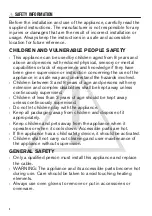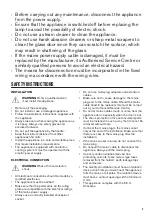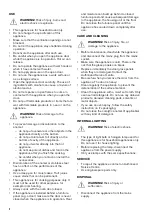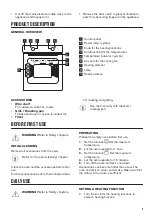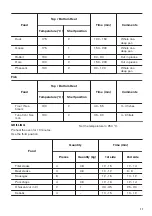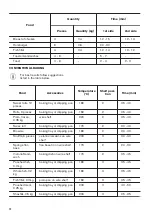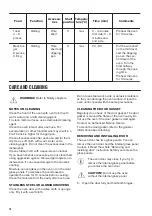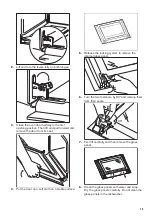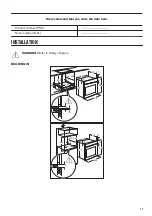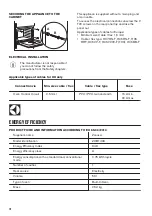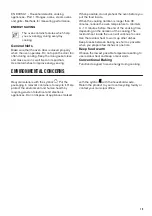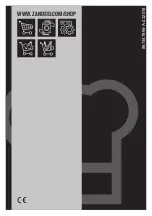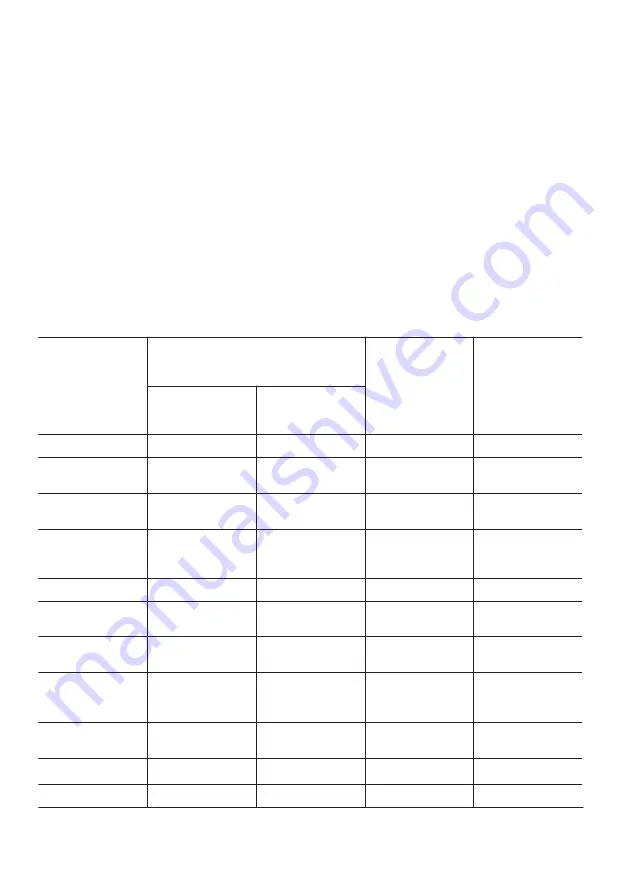
COOKING RECOMMENDATIONS
The oven has four shelf positions.
Count the shelf positions from the bottom of the
oven floor.
Your oven may bake or roast differently to the oven
you had before. The below tables provide you with
the standard settings for temperature, cooking time
and shelf position.
If you cannot find the settings for a special recipe,
look for the similar one.
Baking cakes
Do not open the oven door before 3/4 of the set
cooking time is up.
Cooking meat and fish
Use a deep pan for very fatty food to prevent the
oven from stains that can be permanent.
Leave the meat for approximately 15 minutes before
carving so that the juice does not seep out.
To prevent too much smoke in the oven during
roasting, add some water into the deep pan. To
prevent the smoke condensation, add water each
time after it dries up.
Cooking times
Cooking times depend on the type of food, its
consistency, and volume.
Initially, monitor the performance when you cook.
Find the best settings (heat setting, cooking time,
etc.) for your cookware, recipes and quantities
when you use this appliance.
BAKING AND ROASTING TABLE
Cakes
Food
Top / Bottom Heat
Time (min)
Comments
Temperature (°C)
Shelf position
Whisked recipes
170
2
45 - 60
In a cake mould
Shortbread
dough
170
2
24 - 34
In a cake mould
Butter-milk
cheese cake
170
1
60 - 80
In a 26 cm cake
mould
Apple cake (Ap-
ple pie)
170
1
100 - 120
In two 20 cm
cake moulds on
a wire shelf
Strudel
175
2
60 - 80
In a baking tray
Jam-tart
170
2
30 - 40
In a 26 cm cake
mould
Fruit cake
170
2
60 - 70
In a 26 cm cake
mould
Sponge cake
(Fatless sponge
cake)
170
2
35 - 45
In a 26 cm cake
mould
Christmas cake /
Rich fruit cake
170
2
50 - 60
In a 20 cm cake
mould
Plum cake
1)
170
2
50 - 60
In a bread tin
Small cakes
170
3
20 - 30
In a baking tray
8


